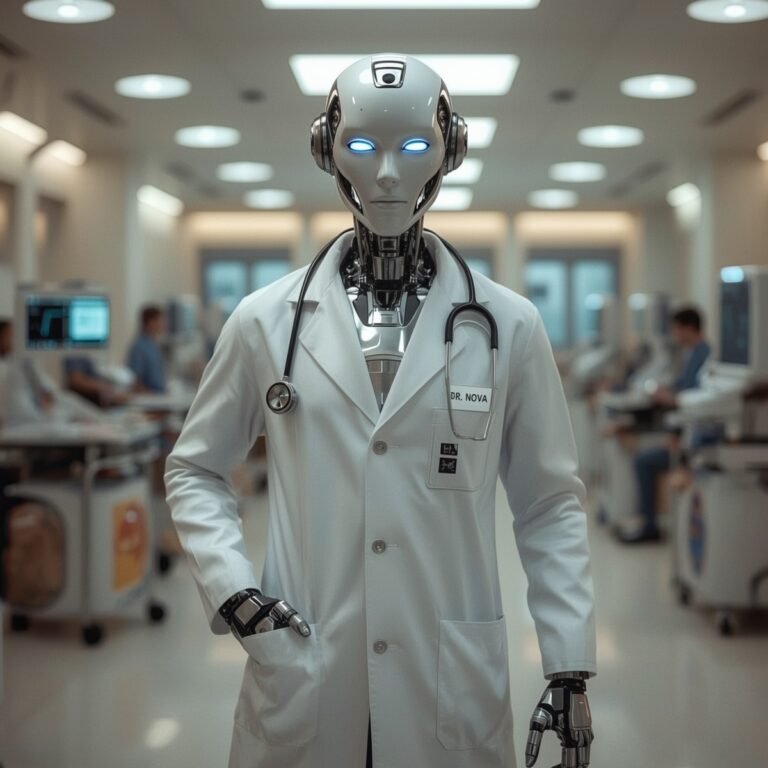A nonprofit called Future House just released four groundbreaking artificial intelligence agents built specifically for scientific discovery—and they’re completely free to use.
Backed by former Google CEO Eric Schmidt, this isn’t a private beta or some early prototype. The platform is live, public, and already outpacing PhDs and professional researchers in specific high-stakes tasks. With a mission to revolutionize the pace and accessibility of science, Future House’s open platform may represent the future of research.
The four new AI agents Crow, Falcon, Owl, and Phoenix aren’t designed for casual conversation. Instead, they tackle everything from literature review and experiment validation to molecular synthesis and drug discovery. Together, they allow one person to do the work of entire scientific teams in a fraction of the time , sometimes in just minutes.
Built for Science, Not Small Talk
Each AI agent has a distinct role:
• Crow is the fast, sharp generalist. Ask it a scientific question, and it returns a citation-supported answer by scanning open-access journals and public research repositories.
• Falcon is the long-form researcher. It reads hundreds of full-text articles, pulls from proprietary databases like Open Targets, and generates comprehensive reviews.
• Owl, formerly a prototype named “Has Anyone,” is a research detective. It checks whether an experiment has already been done saving scientists months of wasted effort.
• Phoenix, still in experimental mode, is a chemical synthesis specialist. It proposes new drug-like compounds, predicts reactions, checks patent status, and estimates synthesis costs.
All four agents can be chained together to handle full scientific workflows from hypothesis to compound suggestion in a matter of hours, not weeks.
Transparent AI That Actually Makes Sense
What sets Future House apart is its emphasis on transparency and accountability. After high-profile failures in AI-driven science such as Google DeepMind’s much-hyped “new materials” that turned out to be rehashes Future House is taking no chances.
Their agents display every step of their reasoning process. When Falcon answers a query, users can see search terms, journal rankings, citation graphs, and why one source (like Nature Genetics) was prioritized over another (bioRxiv preprints, for example).
In one demo, Falcon filtered 32 papers down to 24 relevant sources and synthesized 62 unique evidence points into a cohesive review with every decision visible to the user.
That level of transparency is key to earning the trust of the scientific community, which remains justifiably skeptical after years of AI hype and hallucinations.
AI in Action: Tackling PCOS in Minutes
To prove the agents are more than vaporware, Future House shared a real-world example: using its platform to explore polycystic ovary syndrome (PCOS).
Michaela Hinks, a genetics researcher with no background in PCOS, began by asking Falcon for a full overview definitions, symptoms, diagnostics, and root causes. The agent pulled and filtered clinical trial records and peer-reviewed studies to generate a reliable overview in minutes.
Next, she switched to Crow to identify high-frequency genes linked to PCOS in genome-wide association studies. Crow highlighted DENND1A , among others, as a major player.
Then came Owl, which confirmed one group had connected DENND1A to elevated testosterone levels but no one had yet explained why. That gap justified a real-world wet lab experiment.
Using Phoenix, she asked for three new drug-like molecules that could target DENND1A activity. The AI mapped protein interactions, eliminated patented or derivative compounds, and generated a dossier for each candidate, including synthesis cost, delivery method, and solubility.
What once took weeks of literature review and patent searches was handled in a few well structured prompts.
How Future House’s Architecture Works
Future House calls its tech stack a “four-layer architecture.”
1 Base Layer: Generic tools like AlphaFold and chemistry calculators.
2 Workflow Agents: Crow and Falcon execute specific tasks (e.g. protein annotation, literature reviews).
3 AI Scientists: Autonomous agents (like Owl and Phoenix) that connect workflows and design experiments.
4 Human Researchers: Still in charge of major questions, ethical oversight, and goal setting.
This human-in-the-loop structure acknowledges AI’s current limits while augmenting researchers’ abilities, not replacing them.
Why This Matters for the Future of AI in Science
Future House’s emphasis on open-source AI tools, transparent reasoning, and careful validation is a direct response to growing concern around AI “hallucinations,” especially in critical fields like biomedical research.
Large Language Models (LLMs) struggle with chemistry math, like counting nitrogen atoms in molecules. That’s why Phoenix integrates external chemistry engines, patent libraries, reaction predictors, and more. The agents don’t rely purely on LLM guesswork instead they leverage hard science tools behind the scenes.
And it’s already making waves: in internal benchmarks, Future House’s AI agents beat top-tier models and human PhD researchers in tasks like literature retrieval, evidence synthesis, and search precision. Though they haven’t yet delivered a novel breakthrough discovery, the platform has laid the foundation.
A New Infrastructure Layer for Global Science
With over 38 million papers on PubMed and 500,000+ clinical trials indexed online, even the best labs struggle to keep up. Future House argues that most research teams don’t have the infrastructure or manpower to search, filter, and analyze this tidal wave of data.
Their solution? Provide an open API layer that labs can use to integrate automated literature review, contradiction detection, and experiment planning into their pipelines. The entire platform is free, open to feedback, and key parts of the code are available under permissive open-source licenses.
Names like Adam Marblestone sit on the board, and Schmidt’s funding helps shield the nonprofit from the monetization pressures that plague many AI startups.
What’s Next?
The short-term roadmap includes support for raw lab data (e.g., live single-cell RNA sequences) and real-time cross-experiment correlation. Long term, Future House envisions an autonomous AI scientist capable of reading all biology papers, proposing hypotheses, designing experiments, and even executing them with robotic lab tools.
If they succeed, they could massively boost scientific productivity, uncover thousands of overlooked discoveries buried in supplementary files, and give every researcher a personal assistant capable of digesting entire libraries overnight.
Final Thoughts: Will AI Take Over Science?
Skepticism is healthy, especially in a post-ChatGPT world where hallucinated facts can masquerade as truth. But Future House is betting that radical transparency + public feedback beats closed-door secrecy.
You can try it yourself now: head to https://www.futurehouse.org/research-announcements/launching-futurehouse-platform-ai-agents fire up Crow, consult Falcon, let Owl verify your theory, and ask Phoenix if it can design a compound to test.
Even if we’re still years from fully autonomous AI scientists, compressing months of work into hours could be the most valuable research breakthrough yet.







